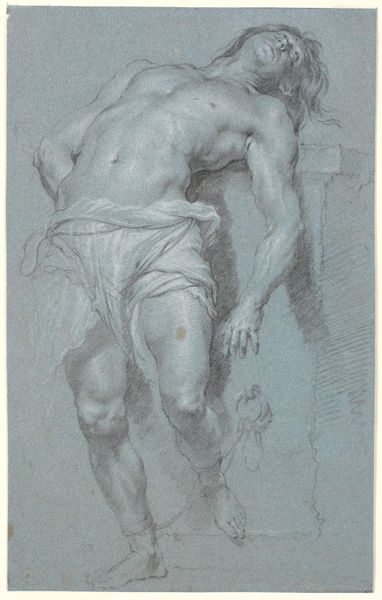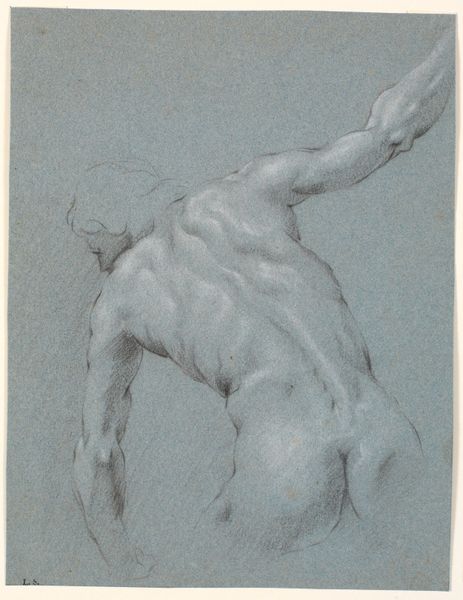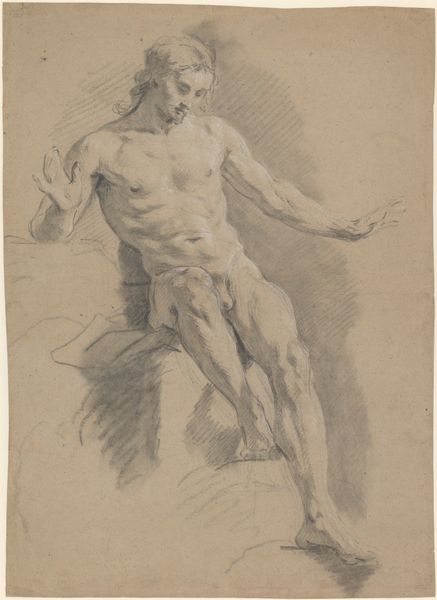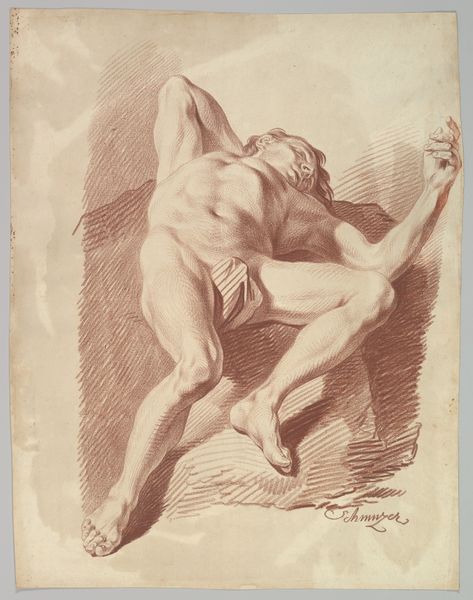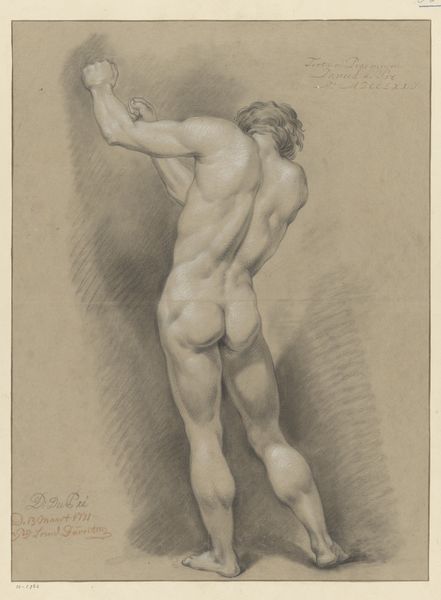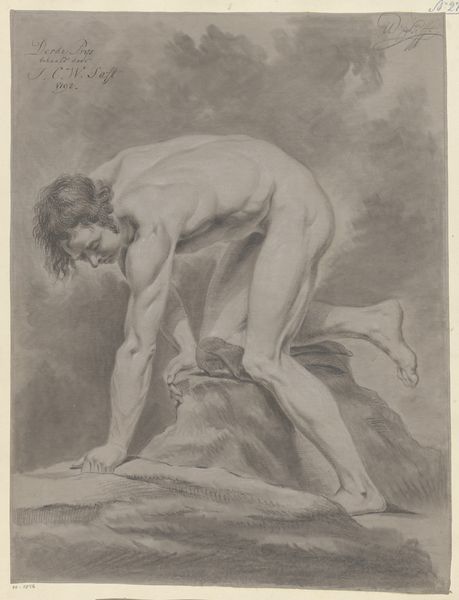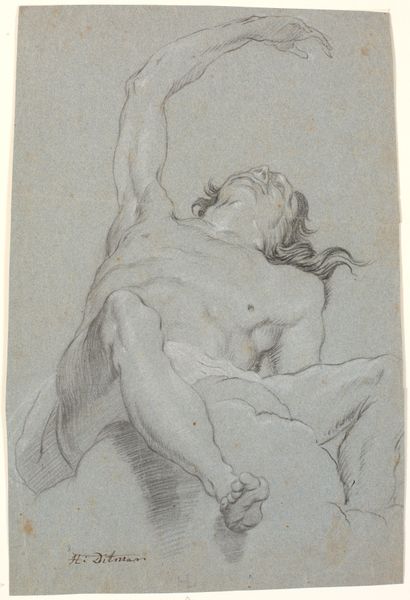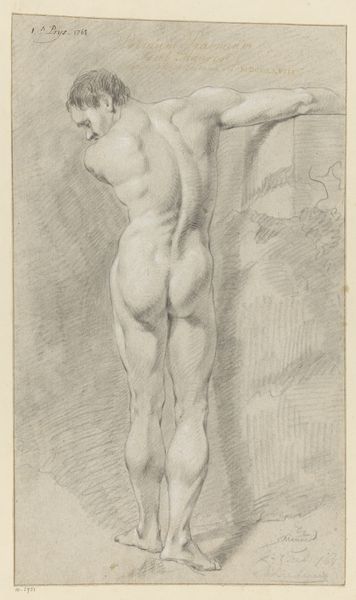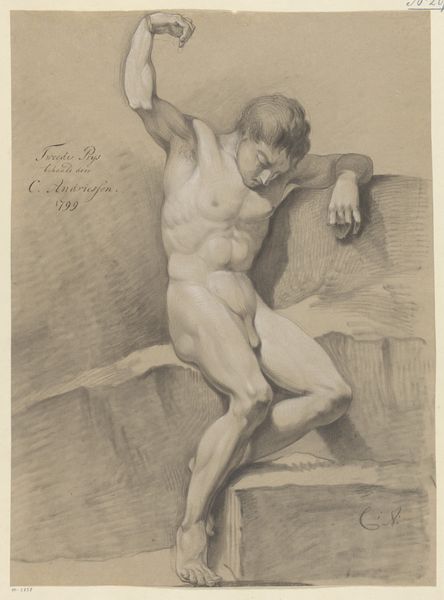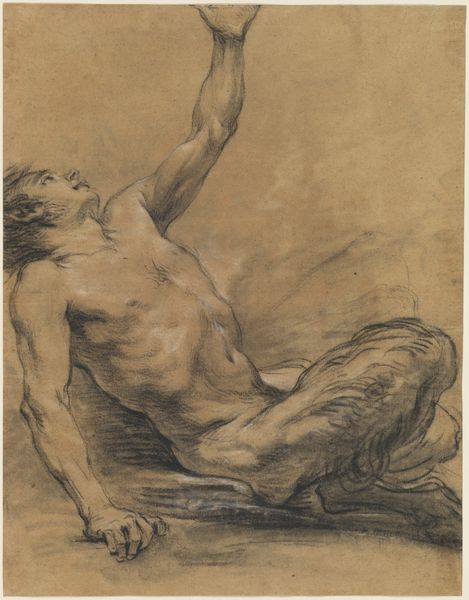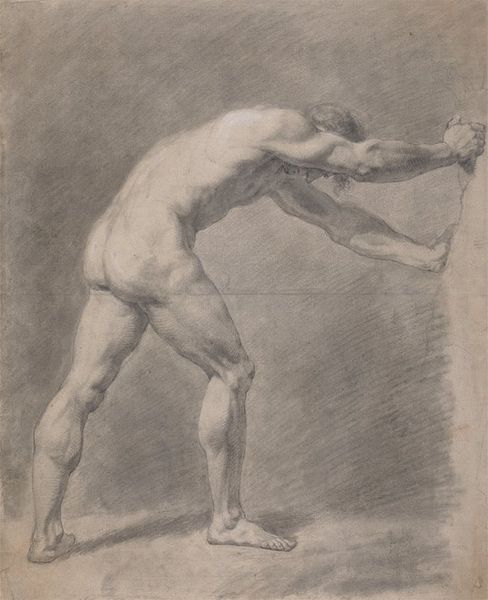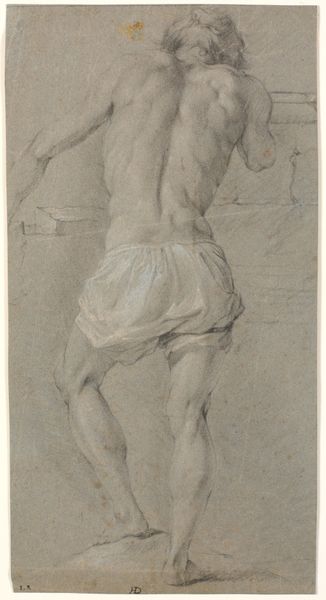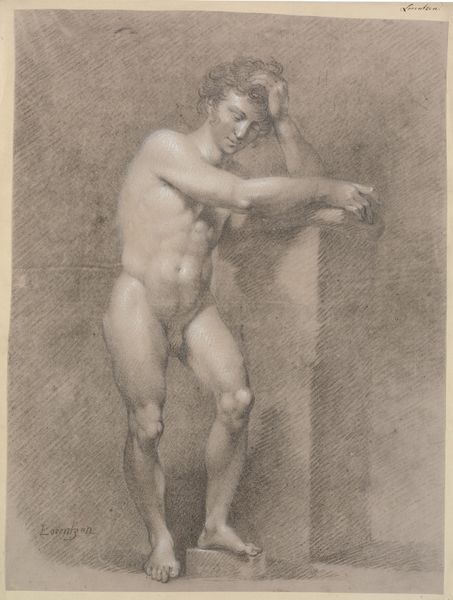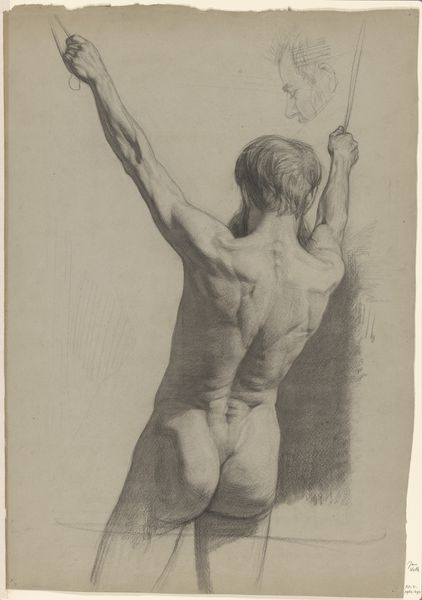
Stående foroverbøjet mandlig model med strakte arme 1625 - 1677
0:00
0:00
drawing, pencil, charcoal
#
drawing
#
baroque
#
charcoal drawing
#
figuration
#
pencil drawing
#
pencil
#
portrait drawing
#
charcoal
#
history-painting
#
nude
Dimensions: 400 mm (height) x 250 mm (width) (bladmaal)
Curator: Standing before us is "Standing Bent-Over Male Model with Extended Arms," a work crafted between 1625 and 1677 by Heinrich Dittmers. This study, currently residing at the SMK, employs charcoal and pencil to capture the human form. Editor: The first thing I notice is how dramatically lit this figure is. It almost feels like the beginning of something. A narrative or scene, rendered as raw musculature, straining for an unknown goal. Curator: Indeed. It exemplifies a trend of the Baroque era to utilize preparatory figure drawings for history paintings, as well as showing a figure with the classical idealization of the body, influenced from the Greco-Roman styles and art. These drawings were not ends in themselves, but rather studies for larger compositions, and they also reveal a vital aspect of art training. Editor: Interesting, seeing a classical tradition being merged with a looser, freer Baroque style, and as for training - I do think I understand what that figure is trying to tell me: it is screaming about stretching and training before starting any sport. Curator: One could say that Dittmers engages in the complex academic structure with which to approach the body. However, if we see beyond his artistic choices, we can ask about the socio-cultural context where a human could be viewed as an object for study; with, possibly, hints about power dynamics embedded within that drawing. Editor: Right! So you mean it's not about art or even muscles... This completely shifts the scene! It is starting to become somewhat awkward that someone had to do poses while other person did sketches with pencil. Is it about control? Does the posture show the real exhaustion or the expression of a requirement? It kind of looks that way. Curator: Those questions of agency and exploitation were being thought-through and played out in other contexts at this period. It might be a valuable insight as we consider Dittmer's choices and their reflection and role in culture at the time. Editor: Thinking about art like that adds so many extra layers... Now when I look at this drawing, I not only see muscle, but I see more complex, nuanced ideas around body, model and expression, or perhaps the repression, of its potential. Thanks for sharing it with me.
Comments
No comments
Be the first to comment and join the conversation on the ultimate creative platform.
